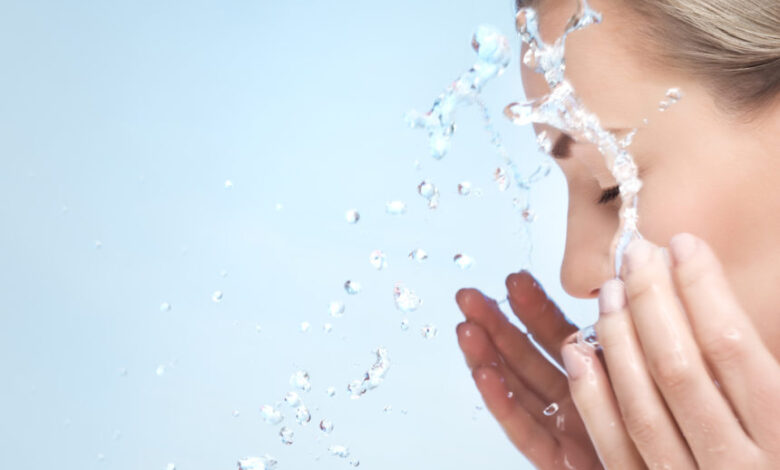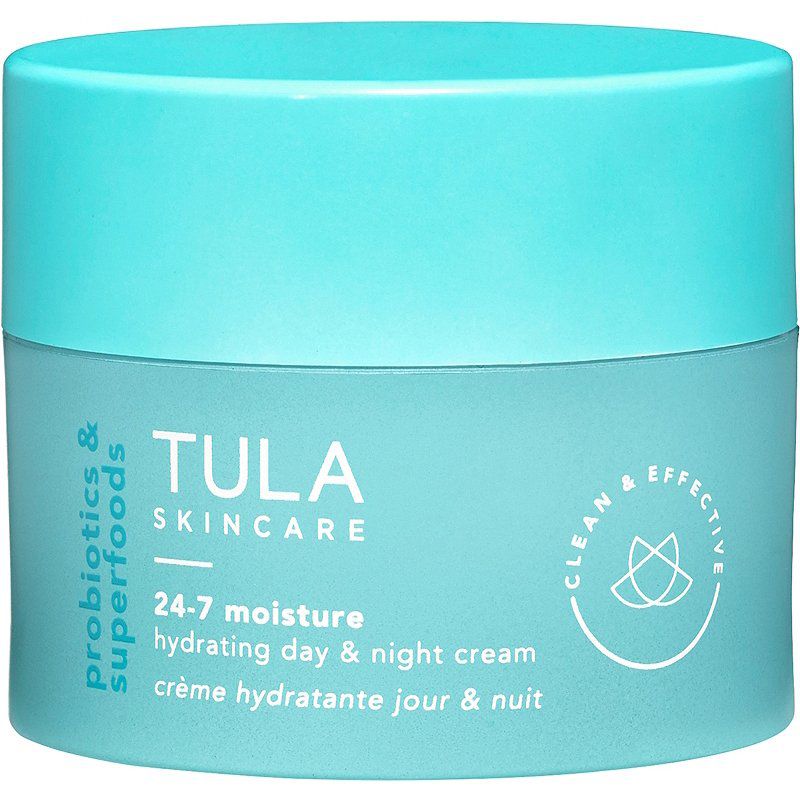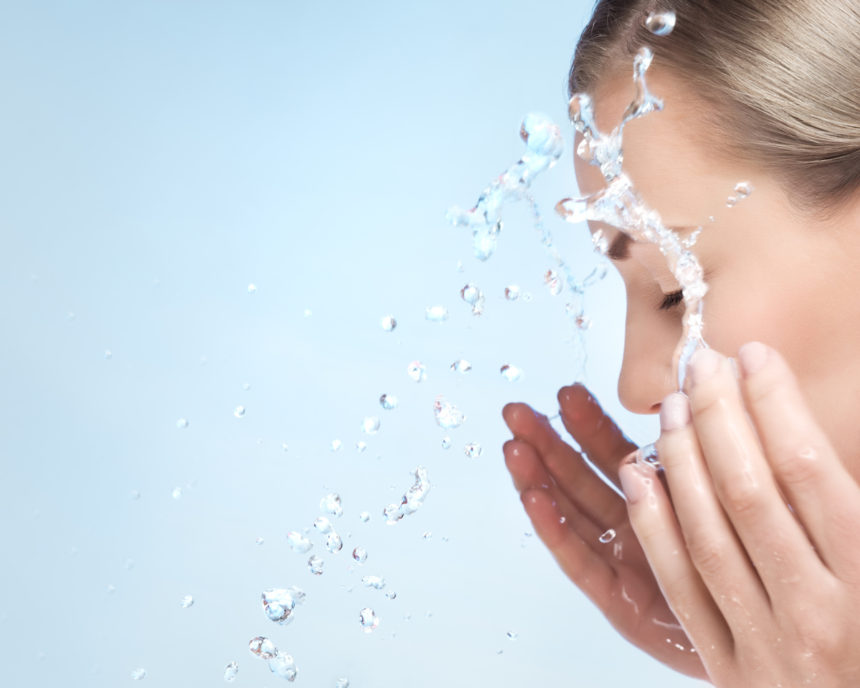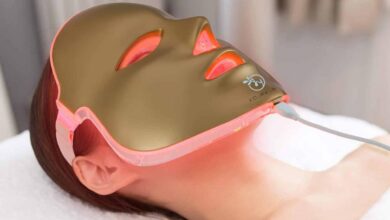
Best skincare for rosacea is crucial for managing this common skin condition. This guide dives deep into understanding rosacea’s various types, triggers, and long-term effects. We’ll explore beneficial skincare ingredients, analyze top rosacea-specific products, and detail optimal application methods. Plus, we’ll cover lifestyle factors that impact rosacea and provide tailored skincare routines for effective management.
Rosacea, a chronic inflammatory skin condition, can manifest in different ways, each requiring a tailored approach. This detailed guide provides actionable steps for finding the best skincare routine for your specific rosacea type and needs. From identifying the right ingredients to mastering product application, you’ll discover a comprehensive strategy for controlling your rosacea and improving your overall skin health.
Understanding Rosacea

Rosacea is a chronic skin condition that primarily affects the face. It’s characterized by redness, flushing, and visible blood vessels, often accompanied by other symptoms. While it’s not a contagious or life-threatening disease, rosacea can significantly impact a person’s self-esteem and quality of life. Understanding the different subtypes and triggers is crucial for effective management and treatment.Rosacea manifests in various forms, each with its own set of symptoms.
These symptoms can vary in severity and frequency, often flaring up and subsiding over time. This variability necessitates a personalized approach to skincare and treatment, tailored to the individual’s specific needs. The key is to identify the underlying causes and triggers for your rosacea to create a customized plan.
Rosacea Subtypes
Rosacea typically presents in one of three main subtypes, each with its own characteristic features: erythematotelangiectatic, papulopustular, and phymatous. These subtypes are distinguished by the specific skin changes they induce.
- Erythematotelangiectatic Rosacea: This is the most common subtype, characterized primarily by persistent redness and visible dilated blood vessels (telangiectasias) on the face. The redness often appears flushed and can be triggered by various factors, like heat, stress, or alcohol. This redness is often a diffuse, persistent flush that can last for hours, days, or weeks. There may also be a noticeable burning or stinging sensation.
- Papulopustular Rosacea: This subtype involves the development of small, red bumps (papules) and/or pus-filled pimples (pustules) alongside the redness and visible blood vessels. The affected areas can become inflamed and tender, mimicking acne. These bumps can be accompanied by noticeable swelling, making the affected areas appear raised. Papules often appear as small, inflamed bumps on the skin, whereas pustules are characterized by the presence of pus.
- Phymatous Rosacea: This is the least common subtype and is characterized by a thickening and enlargement of the skin, often on the nose. This thickening can lead to a bulbous or bumpy appearance, and can affect the chin and cheeks. This subtype typically progresses slowly over many years and can lead to significant disfigurement if left untreated. It’s crucial to note that this subtype is often associated with advanced stages of the condition.
Triggers for Rosacea Flare-Ups
Various factors can trigger or exacerbate rosacea symptoms. Understanding these triggers is crucial for managing the condition effectively.
- Environmental Factors: Extreme temperatures, sun exposure, and changes in humidity can trigger rosacea flare-ups. Strong winds, cold weather, and heat can all be contributing factors.
- Dietary Factors: Spicy foods, alcohol, and caffeine are known to trigger rosacea in some individuals. Certain foods can also cause increased blood flow, exacerbating the redness associated with rosacea.
- Emotional Factors: Stress, anxiety, and emotional upset are significant triggers for many people with rosacea. Stress hormones can influence blood vessel dilation, leading to redness and inflammation.
- Other Factors: Certain medications, hot beverages, and even some skincare products can also potentially exacerbate rosacea symptoms in susceptible individuals. It’s important to identify these individual triggers and avoid them as much as possible.
Long-Term Impact of Rosacea
Rosacea can have a profound impact on a person’s physical and emotional well-being. The chronic nature of the condition can lead to feelings of self-consciousness and social anxiety.
- Physical Impact: Persistent redness, visible blood vessels, and skin lesions can significantly impact a person’s self-image and confidence. The discomfort associated with flare-ups can also interfere with daily activities and routines.
- Emotional Impact: The chronic nature of rosacea and the fluctuating symptoms can cause significant emotional distress. Individuals with rosacea may experience feelings of embarrassment, anxiety, and depression due to the impact on their appearance. Social interactions can be affected as well.
Identifying Skincare Ingredients: Best Skincare For Rosacea
Knowing which ingredients are good for rosacea-prone skin and which ones to avoid is crucial for managing symptoms effectively. This section delves into the specifics of beneficial ingredients, their mechanisms of action, and provides a comparative analysis of their effectiveness. It also highlights ingredients that should be carefully considered or avoided altogether.Understanding the science behind how ingredients interact with rosacea-prone skin is key to selecting the right products.
Many ingredients work by targeting inflammation, redness, and sensitivity. A thoughtful approach to ingredient selection can significantly improve skin health and well-being.
Beneficial Ingredients for Rosacea-Prone Skin
A variety of ingredients can be beneficial for managing rosacea symptoms. These ingredients often work by reducing inflammation, calming redness, and improving skin barrier function.
- Azelaic Acid: This naturally occurring alpha-hydroxy acid (AHA) is known for its anti-inflammatory and antimicrobial properties. It helps reduce redness, minimize the appearance of pores, and improve skin texture. Azelaic acid works by reducing the overproduction of sebum and regulating skin cell turnover, thereby mitigating some of the factors that contribute to rosacea symptoms. Studies have shown its effectiveness in reducing inflammatory lesions and controlling redness.
- Niacinamide: A form of vitamin B3, niacinamide is a powerful multi-tasker. It strengthens the skin barrier, controls oil production, and reduces inflammation. It is also effective in minimizing redness and improving skin tone. Niacinamide works by modulating the inflammatory response, reducing the activity of enzymes that contribute to inflammation, and regulating the production of ceramides, which help strengthen the skin barrier.
- Green Tea Extract: This extract is rich in antioxidants and has anti-inflammatory properties. It helps soothe irritated skin, reduce redness, and protect against environmental stressors. Green tea extract works by reducing oxidative stress, scavenging free radicals, and modulating inflammatory pathways. It’s also beneficial for promoting skin hydration.
Comparison of Ingredient Effectiveness
This table provides a comparative analysis of several ingredients commonly used for managing rosacea symptoms.
| Ingredient | Mechanism of Action | Pros | Cons |
|---|---|---|---|
| Azelaic Acid | Anti-inflammatory, antimicrobial, regulates skin cell turnover | Effective in reducing redness, improving skin texture, minimizing pores | May cause mild skin irritation in some individuals, especially at higher concentrations |
| Niacinamide | Strengthens skin barrier, controls oil production, reduces inflammation | Effective in reducing redness, improving skin tone, suitable for various skin types | Potentially causes mild flushing or redness in some individuals initially |
| Green Tea Extract | Rich in antioxidants, anti-inflammatory | Soothes irritated skin, reduces redness, protects against environmental stressors | May not be as potent as other ingredients in treating severe rosacea |
| Hyaluronic Acid | Hydrates skin, improves skin barrier function | Improves skin moisture and reduces dryness, a common symptom of rosacea | May not directly address the inflammation or redness associated with rosacea |
Ingredients to Avoid
Certain ingredients can exacerbate rosacea symptoms. It’s essential to be mindful of these ingredients when choosing skincare products.
- Strong Acids: Ingredients like glycolic acid, salicylic acid, and retinol, while beneficial for other skin types, can be irritating for rosacea-prone skin. These ingredients can disrupt the skin’s delicate barrier and increase inflammation. They can also cause redness, dryness, and sensitivity.
- Fragrances and Essential Oils: Many fragrances and essential oils can trigger allergic reactions and inflame sensitive skin. These can lead to flushing, redness, and irritation. The potential for irritation from fragrances and essential oils makes them unsuitable for individuals with rosacea.
- Harsh Detergents: Sodium lauryl sulfate (SLS) and sodium laureth sulfate (SLES) are harsh detergents often found in cleansers. These can strip the skin of its natural oils, leading to dryness, irritation, and exacerbation of rosacea symptoms. The removal of natural oils can disrupt the skin’s barrier, making it more susceptible to irritation and redness.
Evaluating Skincare Products
Choosing the right skincare products for rosacea is crucial for managing symptoms and maintaining healthy skin. A personalized approach is key, as different products react differently on various skin types and sensitivities. Understanding the ingredients, formulations, and textures is vital to finding the best fit for your rosacea-prone skin.
Popular Rosacea-Specific Skincare Products
A variety of skincare products are specifically formulated to address the needs of rosacea-prone skin. This section highlights some popular options, focusing on their active ingredients, formulations, and textures.
- CeraVe Renewing SA Cleanser: This gentle cleanser is a popular choice for rosacea-prone skin. It uses salicylic acid (SA) to exfoliate, helping to prevent clogged pores and reduce inflammation. The non-comedogenic formula is designed to be suitable for sensitive skin.
- La Roche-Posay Toleriane Double Repair Face Moisturizer: A widely recommended moisturizer, this product contains thermal spring water, niacinamide, and ceramides to soothe and hydrate the skin. Its lightweight, non-greasy texture makes it suitable for everyday use.
- Paula’s Choice Skin Balancing 2% BHA Liquid Exfoliant: This exfoliant utilizes beta hydroxy acid (BHA), another effective ingredient for rosacea. BHA helps to unclog pores and remove dead skin cells, reducing the appearance of redness and inflammation. Its liquid formulation is convenient for application.
Comparing Active Ingredients, Formulations, and Textures
Different rosacea products employ various ingredients and formulations. Understanding these aspects is crucial for tailoring your routine.
- Active Ingredients: Products may utilize ingredients like ceramides, niacinamide, salicylic acid, or beta hydroxy acids (BHAs) to address dryness, inflammation, and other symptoms. Each ingredient works in different ways, so it’s important to choose products that address your specific needs.
- Formulations: Products come in different forms, including creams, lotions, gels, and serums. The texture impacts absorption and how the product interacts with the skin. For example, a gel is often lighter than a cream and may be better for oily or combination skin.
- Textures: The texture of a product directly impacts its feel on the skin. Some products may feel heavy or greasy, while others feel light and refreshing. Consider the texture when selecting a product, ensuring it’s comfortable for your daily routine.
Product Comparison Table
The table below summarizes the pros and cons of some popular rosacea-specific products. Remember that individual experiences may vary.
| Product Name | Key Ingredients | Pros | Cons |
|---|---|---|---|
| CeraVe Renewing SA Cleanser | Salicylic Acid | Gentle, non-comedogenic, effective for exfoliation | May not be strong enough for severe breakouts |
| La Roche-Posay Toleriane Double Repair Face Moisturizer | Thermal spring water, niacinamide, ceramides | Soothes and hydrates, lightweight | May not be suitable for all skin types with severe dryness |
| Paula’s Choice Skin Balancing 2% BHA Liquid Exfoliant | Beta Hydroxy Acid (BHA) | Effective for unclogging pores, reduces inflammation | May cause dryness or irritation in some individuals |
Importance of Patch Testing
Patch testing is crucial before introducing any new skincare product, especially if you have sensitive skin or rosacea. This preliminary test helps determine if you’re allergic or have an adverse reaction to a particular product. A small amount of the product is applied to a small area of skin, typically the inner forearm, and monitored for any signs of irritation or allergic reactions.
This practice is vital for avoiding potential flare-ups or complications.
Product Application Methods

Applying skincare products correctly is crucial for rosacea management. The way you apply your products can significantly impact how your skin reacts. Gentle application techniques, along with the right product choices, are key to preventing irritation and flare-ups. Understanding the best methods for your rosacea-prone skin can help you achieve a healthier, more comfortable complexion.
A Step-by-Step Guide to Skincare Application
A methodical approach to skincare application can greatly reduce the risk of irritation. Begin by cleansing your face with a gentle cleanser, avoiding harsh scrubbing motions. Pat your skin dry with a soft towel, avoiding rubbing. Next, apply any serums or targeted treatments, gently massaging them into the skin. Follow with moisturizers, again applying with a light touch.
Finish by applying any sunscreen, if needed, using a similar gentle patting motion. This consistent, gentle approach helps maintain skin health and minimize potential flare-ups.
Finding the best skincare for rosacea can be a real challenge, but a healthy glow is achievable! It’s all about finding products that soothe and don’t irritate. Plus, you know, a great pixie cut can really complement your look. Check out how to style pixie cut for some seriously chic ideas. Ultimately, a good skincare routine and a fantastic ‘do are both key to feeling confident and beautiful.
Product Application Methods Table
| Product Type | Application Method | Tips for Rosacea |
|---|---|---|
| Cleanser | Gentle massage in circular motions, avoiding harsh scrubbing. | Use lukewarm water, not hot, to avoid further irritation. |
| Serums/Treatments | Light patting or gentle tapping motions. Avoid harsh rubbing. | Apply a small amount to the affected area and build up gradually if needed. |
| Moisturizer | Light patting or gentle tapping motions, focusing on hydration. | Choose a moisturizer specifically formulated for sensitive skin. |
| Sunscreen | Gentle patting or tapping, ensuring even coverage. | Reapply every two hours, especially after swimming or sweating. |
Importance of Gentle Skincare Products
Using gentle, non-irritating skincare products is paramount for managing rosacea. Products containing harsh chemicals, fragrances, or strong exfoliants can trigger inflammation and worsen symptoms. Focus on products specifically designed for sensitive skin, often marked as hypoallergenic or fragrance-free. Always check ingredient lists for potential irritants. This proactive approach helps maintain a calmer, healthier skin environment.
Avoiding Harsh Scrubbing
Harsh scrubbing or rubbing during skincare routines can exacerbate rosacea symptoms. Avoid abrasive cloths, rough textures, or excessive pressure when cleansing or applying products. Instead, opt for gentle circular motions and patting techniques. These gentler methods minimize friction and prevent micro-tears in the skin, crucial for protecting against irritation and inflammation.
Lifestyle Considerations
Rosacea isn’t just about skincare; it’s about understanding how your overall lifestyle plays a crucial role in managing its symptoms. Factors like diet, stress levels, and sun exposure can significantly impact the redness, inflammation, and other manifestations of rosacea. By adopting healthy habits, you can effectively minimize triggers and promote skin health.Lifestyle choices often influence rosacea’s severity and frequency of flare-ups.
Finding the best skincare for rosacea can be tricky, but a good routine is key. I’ve been experimenting with different products lately, and honestly, sometimes the most effective solutions are the simplest. Plus, checking out Mikey Madison’s style on Saturday Night Live, particularly his fashion choices here , can be a fun way to refresh your own look and approach skincare in a new light.
Hopefully, this combination of different approaches will help me find the best possible rosacea routine.
A balanced approach to diet, stress management, and sun protection, combined with consistent skincare, creates a comprehensive strategy for rosacea management. Proper hydration and maintaining skin moisture are also essential components of a successful rosacea management plan.
Lifestyle Factors Exacerbating Rosacea, Best skincare for rosacea
Certain lifestyle factors can trigger or worsen rosacea symptoms. These factors can vary from person to person, but some common culprits include spicy foods, alcohol consumption, extreme temperatures, and strong emotions. Understanding these triggers allows for proactive measures to minimize their impact.
Finding the best skincare for rosacea can be tricky, but a good routine is key. I’ve been experimenting with a few different products lately, and I’m finding that a gentle cleanser and a soothing moisturizer are really making a difference. Thinking about a beautiful dinner party outfit, like the gorgeous dinner party kaftan autumn sonata , also makes me appreciate how important it is to feel confident in my skin.
Ultimately, the best skincare for rosacea is all about finding products that work for your skin, and that’s what I’m focusing on right now.
Balanced Diet for Rosacea Management
A balanced diet rich in fruits, vegetables, and whole grains can contribute to overall health and potentially reduce rosacea symptoms. Anti-inflammatory foods like berries, leafy greens, and fatty fish are often recommended. Foods high in histamine, such as aged cheeses, fermented foods, and some seafood, might trigger flare-ups in some individuals.
Stress Management Techniques for Rosacea
Chronic stress can exacerbate rosacea symptoms. Stress management techniques such as regular exercise, meditation, yoga, or spending time in nature can help regulate the body’s response to stress. Finding activities that promote relaxation and reduce stress hormones can significantly impact rosacea management.
Sun Protection and Rosacea
Sun exposure is a significant trigger for rosacea. Prolonged sun exposure can lead to increased inflammation and redness. Using broad-spectrum sunscreens with a high SPF (30 or higher) is crucial for protecting the skin from the sun’s harmful UV rays. Seek shade during peak sun hours and wear protective clothing, like hats and sunglasses, when outdoors.
Hydration and Skin Moisture for Rosacea
Adequate hydration is essential for maintaining healthy skin. Drinking plenty of water helps keep the skin hydrated from the inside out. Using gentle, hydrating moisturizers can also maintain skin moisture. This helps maintain a protective barrier, preventing dryness and irritation that can exacerbate rosacea symptoms.
Practical Tips for Managing Rosacea Triggers
Identifying and avoiding triggers is a key part of managing rosacea. Keep a journal to track potential triggers and reactions. This can help you pinpoint patterns and develop strategies to minimize triggers. For instance, if spicy foods worsen your rosacea, try limiting your intake or experimenting with alternative spices. Consistent journaling and meticulous record-keeping can be beneficial in this process.
- Avoiding Known Triggers: Pay close attention to how different foods, beverages, or environmental factors affect your skin. Identifying specific triggers can help you make informed choices and minimize flare-ups. For example, if you notice a correlation between spicy foods and rosacea flare-ups, limit your intake of these foods or consider alternative spice options.
- Stress Reduction Techniques: Incorporate stress-reducing activities into your daily routine. These activities can help regulate the body’s response to stress and potentially minimize rosacea flare-ups. Examples include meditation, deep breathing exercises, yoga, or spending time in nature.
- Consistent Sun Protection: Implementing consistent sun protection measures is crucial. Apply broad-spectrum sunscreen with an SPF of 30 or higher daily, even on cloudy days. Seek shade during peak sun hours and wear protective clothing.
Illustrative Examples
Now that we’ve explored the intricacies of rosacea and the key elements of effective skincare, let’s delve into practical examples. Tailoring a skincare routine to rosacea requires understanding your unique skin’s needs and reactions. The routines below demonstrate how different products can be integrated into a comprehensive approach, emphasizing the importance of consistency for optimal results.
Sample Skincare Routines for Rosacea
Choosing the right skincare routine for rosacea is a personalized journey. The following examples illustrate various approaches, each incorporating ingredients and products that can help manage symptoms and promote healthy skin. Remember to consult with a dermatologist for personalized recommendations.
- Routine 1: Gentle Daily Routine for Sensitive Skin
- Cleanse with a gentle, fragrance-free cleanser.
- Apply a lightweight, hydrating serum containing soothing ingredients like aloe vera or chamomile.
- Use a broad-spectrum SPF 30 sunscreen.
- Cleanse with a gentle, fragrance-free cleanser.
- Apply a thin layer of a hydrating moisturizer with ceramides.
- Routine 2: Targeted Routine for Active Rosacea Flare-ups
- Cleanse with a gentle, fragrance-free, foaming cleanser.
- Apply a calming, soothing serum containing ingredients like niacinamide or licorice root extract.
- Apply a broad-spectrum SPF 30 sunscreen.
- Cleanse with a gentle, fragrance-free, foaming cleanser.
- Apply a lightweight moisturizer containing ceramides.
- Apply a spot treatment with ingredients known to target flare-ups, like tea tree oil or zinc.
- Routine 3: Comprehensive Routine for Moderate Rosacea
- Cleanse with a gentle, fragrance-free, foaming cleanser.
- Apply a lightweight, hydrating serum containing antioxidants like vitamin C (at a low concentration).
- Apply a broad-spectrum SPF 30 sunscreen.
- Cleanse with a gentle, fragrance-free, foaming cleanser.
- Apply a moisturizer with ceramides and a low concentration of retinol (after consulting a dermatologist).
- Use a gentle exfoliant 1-2 times a week.
Morning:
Evening:
This routine emphasizes gentle cleansing and hydration. It’s suitable for individuals with mild rosacea and sensitive skin, focusing on preventing irritation and maintaining a healthy moisture barrier.
Morning:
Evening:
This routine targets active flare-ups by incorporating products that can reduce inflammation and redness. The addition of spot treatments can be helpful in managing localized redness.
Morning:
Evening:
This routine is designed for individuals with moderate rosacea, incorporating both soothing and potentially beneficial ingredients like retinol. It’s crucial to introduce these ingredients gradually and under professional guidance.
The Significance of Consistency
Consistency is key when managing rosacea with skincare routines. Regular application of chosen products builds a protective barrier and helps maintain a stable skin condition. Skin reactions to new products can vary, so consistent use helps identify potential irritants and promotes long-term efficacy. It is recommended to stick to the selected routine for at least 4-8 weeks to assess the effects and make necessary adjustments.
Final Conclusion
In conclusion, managing rosacea effectively involves a multifaceted approach. Understanding your skin type and rosacea subtype is paramount. This guide has equipped you with knowledge about key ingredients, products, and application techniques to tailor a routine that suits your needs. Remember, consistency and a proactive lifestyle are crucial for long-term rosacea management. By combining the right skincare with healthy habits, you can significantly improve your skin’s health and overall well-being.



